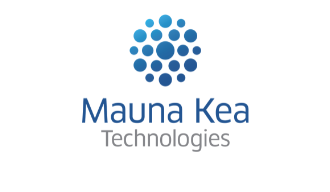Positive Results on Needle-Based Endomicroscopy for Differentiating and Managing Pancreatic Cystic Lesions
Three recent clinical publications demonstrate that Cellvizio® AQ-Flex™ 19 Confocal Miniprobe significantly improves diagnostic accuracy versus standard of care, positively impacting management of patients with pancreatic cystic lesions
Mauna Kea Technologies today announced three publications on two large prospective studies (ClinicalTrials.gov INDEX study identifier: NCT02516488 and CONTACTII study identifier: NCT01563133) that demonstrate how Cellvizio positively impacts the diagnosis and management of pancreatic cystic lesions (PCL). The articles, entitled “Diagnostic Accuracy of EUS-guided Confocal Laser Endomicroscopy for Differentiating Mucinous from Non-Mucinous Pancreatic Cystic Lesions”, “EUS-guided confocal laser endomicroscopy: prediction of dysplasia in intraductal papillary mucinous neoplasms” and “Impact of needle-based confocal laser endomicroscopy on the therapeutic management of single pancreatic cystic lesions”, were published in three major peer reviewed journals: Clinical Gastroenterology and Hepatology (2019, DOI: 10.1016/j.cgh.2019.06.010), Gastrointestinal Endoscopy (2019, DOI: 10.1016/j.gie.2019.09.014) and Surgical Endoscopy (2019, DOI: 10.1007/s00464-019-07062-9).
Currently, the diagnosis of PCLs relies upon cyst fluid carcinoembryonic antigen (CEA) and/or cytology, which can be subjective or difficult to interpret, with more than 50% of cysts missing cytologicial confirmation after fine-needle-aspiration (FNA). The management of PCLs using conventional technology is also challenging considering the lack of optimal diagnostics and divergent patient management guidelines.
These recent publications demonstrate the very high diagnostic yield of nCLE (84% to 91%), while validating accuracies for the differentiation of mucinous versus non-mucinous PCLs (97% in both studies). These high diagnostic performances impacted therapeutic decisions in 28% of patients with PCLs, preventing 35% of the patients with benign cysts from requiring any further surveillance, and reversing the choice between surveillance and surgery in 15% of the pre-malignant lesions, thereby preventing patients from unnecessary surgery.
“In our prospective INDEX study, using surgical histopathology as a gold standard, we demonstrated that specific endomicroscopy image patterns have significantly higher diagnostic accuracy for differentiating mucinous from non-mucinous PCLs compared to standard of care,” said Somashekar G. Krishna, M.D., M.P.H., Associate Professor of Medicine and Clinical Research Director, of the Division of Gastroenterology, Hepatology and Nutrition at the Ohio State University Wexner Medical Center.
“These new data from Dr. Krishna’s INDEX study validates the high diagnostic performance and yield of Cellvizio for pancreatic cystic lesions. In our recent analysis published in Surgical Endoscopy, we have shown that this high diagnostic performance and yield of Cellvizio allows clinicians to alter, with a high confidence level, their treatment decisions,” said Bertrand Napoléon, M.D., Department of Gastroenterology at the Jean Mermoz Private Hospital in Lyon, France and co-author of the CONTACTII study. “These two studies - which included large numbers of subjects who underwent both nCLE and surgical resection of PCLs - demonstrated the strong value of endomicroscopy imaging to improve the management of PCLs.”
“The characterization of pancreatic cysts remains a major medical challenge around the world,” said Robert L. Gershon, Chief Executive Officer of Mauna Kea Technologies. “The very positive results published by Dr. Krishna’s and Dr. Palazzo’s teams confirm the value of our technology in the field of pancreatic cancer diagnosis and will help the growing number of sites utilizing Cellvizio make more informed decisions for their patients who present pancreatic cystic lesions. It provides further evidence that the use of our probe- and needle-based endomicroscopy platform is key across GI diseases, paving the way toward improving patient management.”
Background:
Two publications focused on the INDEX study, which compared the diagnostic accuracy of nCLE for differentiating mucinous from non-mucinous PCLs to the current standard of care, and enrolled a total of 144 patients in the US. Standard of care sensitivity, specificity, and accuracy for the diagnosis of mucinous PCLs were 74%, 61%, and 71% respectively, while they reached 98%, 94%, and 97%, respectively, for nCLE alone. The third article, based on CONTACTII study, demonstrated the significant positive impact of nCLE on the management of patients with PCL. The addition of nCLE information to EUS-FNA significantly improved the reliability both in terms of diagnosis and therapeutic management among experts in PCLs, by changing diagnoses and therapeutic management in 27% and 28% of the cases, respectively (with p=.005 and p<.0001, respectively). These changes prevented 35% of the patients with benign cysts from requiring any further surveillance, and reversed the choice between surveillance and surgery in 15% of the pre-malignant lesions, thereby preventing patients from unnecessary surgery.


